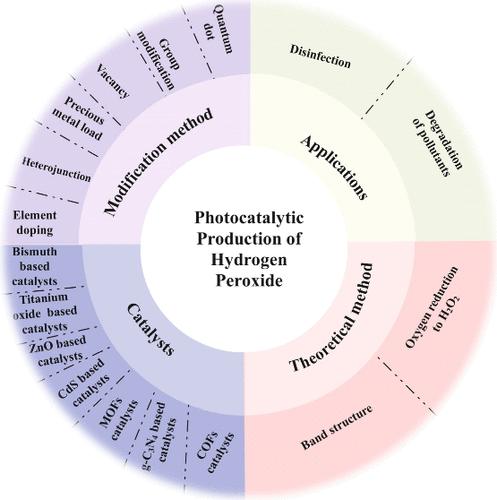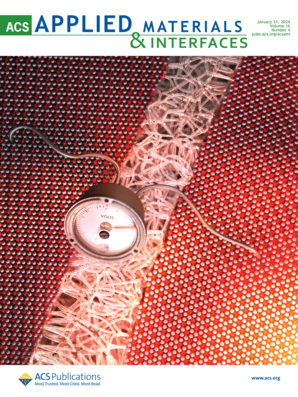A Review on Photocatalytic Hydrogen Peroxide Production from Oxygen: Material Design, Mechanisms, and Applications
IF 8.2
2区 材料科学
Q1 MATERIALS SCIENCE, MULTIDISCIPLINARY
引用次数: 0
Abstract
Hydrogen peroxide (H2O2) finds extensive applications in various industries, particularly in the environmental field. The photocatalytic production of H2O2 through the oxygen reduction reaction (ORR) or the water oxidation reaction (WOR) offers a promising approach. However, several challenges hinder effective on-site production, such as the rapid electron–hole pair recombination, inefficient visible light utilization, and limited selectivity in H2O2 formation. Thus, developing efficient photocatalysts to overcome these challenges is crucial. This review comprehensively outlines the development of photocatalysts and their modification techniques. It also summarizes and compares the H2O2 yield and apparent quantum yield among various photocatalysts with and without the use of organic sacrificial reagents. Density functional theory (DFT) calculations propose the band structure of photocatalysts and the mechanisms underlying oxygen reduction to H2O2. Finally, this review explores the potential environmental applications of photocatalytically produced H2O2. This review guides the design and optimization of photocatalysts, facilitating the continued advancement and application of photocatalysts in environmental contexts.

光催化氧化制过氧化氢:材料设计、机理及应用综述
过氧化氢(H2O2)广泛应用于各个行业,特别是环境领域。通过氧还原反应(ORR)或水氧化反应(WOR)光催化生产H2O2是一种很有前途的方法。然而,一些挑战阻碍了有效的现场生产,例如快速的电子-空穴对重组,低效的可见光利用以及H2O2形成的选择性有限。因此,开发高效的光催化剂来克服这些挑战至关重要。本文综述了光催化剂及其改性技术的研究进展。总结和比较了不同光催化剂在使用和不使用有机牺牲试剂时的H2O2产率和表观量子产率。密度泛函理论(DFT)计算提出了光催化剂的能带结构和氧还原成H2O2的机制。最后,综述了光催化生产H2O2的潜在环境应用。本文综述了光催化剂的设计和优化,为光催化剂在环境环境中的持续发展和应用提供了指导。
本文章由计算机程序翻译,如有差异,请以英文原文为准。
求助全文
约1分钟内获得全文
求助全文
来源期刊

ACS Applied Materials & Interfaces
工程技术-材料科学:综合
CiteScore
16.00
自引率
6.30%
发文量
4978
审稿时长
1.8 months
期刊介绍:
ACS Applied Materials & Interfaces is a leading interdisciplinary journal that brings together chemists, engineers, physicists, and biologists to explore the development and utilization of newly-discovered materials and interfacial processes for specific applications. Our journal has experienced remarkable growth since its establishment in 2009, both in terms of the number of articles published and the impact of the research showcased. We are proud to foster a truly global community, with the majority of published articles originating from outside the United States, reflecting the rapid growth of applied research worldwide.
 求助内容:
求助内容: 应助结果提醒方式:
应助结果提醒方式:


